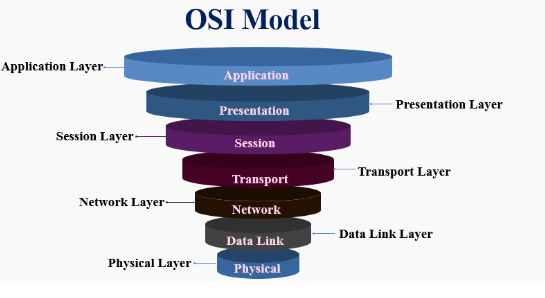Introduction to OSI Layers: Understanding the Building Blocks of Network Communication
Introduction
The Open Systems Interconnection (OSI) model is a conceptual framework that standardizes the functions and interactions of network protocols. It divides the process of network communication into seven distinct layers, each responsible for specific tasks. Understanding the OSI layers is crucial for network engineers and administrators, as it provides a structured approach to troubleshooting, designing, and implementing networks. In this blog post, we will provide a comprehensive introduction to the OSI layers, exploring their functions, interactions, and the role they play in ensuring reliable and efficient network communication.

- The OSI Model Overview
The OSI model, developed by the International Organization for Standardization (ISO) in the late 1970s, provides a systematic way to understand and describe network communication processes. It consists of seven layers, each encapsulating specific functions and services. The layers are organized in a hierarchical manner, with the lower layers focusing on physical aspects, such as data transmission, while the upper layers handle more abstract tasks, such as data formatting and application interactions. The seven layers, from bottom to top, are: Physical, Data Link, Network, Transport, Session, Presentation, and Application. - Layer 1: Physical Layer
The Physical layer is responsible for the physical transmission of data over the network medium. It defines the electrical, mechanical, and procedural specifications for transmitting bits between devices. This layer deals with issues such as voltage levels, cables, connectors, and network interface cards (NICs). It involves converting digital data into signals suitable for transmission, including modulation techniques and physical topologies. The Physical layer ensures the reliable transmission of bits, but it does not concern itself with addressing or error correction. - Layer 2: Data Link Layer
The Data Link layer provides error-free and reliable data transfer between adjacent network nodes. It handles issues such as framing, error detection, and flow control. This layer is divided into two sublayers: the Logical Link Control (LLC) sublayer, which deals with error control and flow control, and the Media Access Control (MAC) sublayer, which handles addressing and media access methods. Ethernet, Wi-Fi, and Point-to-Point Protocol (PPP) are examples of protocols operating at the Data Link layer.
- Layer 3: Network Layer
The Network layer focuses on the delivery of data between different networks. It handles the logical addressing and routing of packets. The most common protocol at this layer is the Internet Protocol (IP), which assigns unique IP addresses to devices and manages the routing of packets across various networks. The Network layer ensures that data is properly addressed, routed, and delivered to the correct destination. It also handles fragmentation and reassembly of packets, if necessary. - Layer 4: Transport Layer
The Transport layer is responsible for end-to-end data delivery and handles issues related to data segmentation, sequencing, and reliability. It ensures that data is properly divided into smaller units, known as segments, and reassembled at the receiving end. The Transport layer provides flow control and error detection mechanisms to ensure the reliable delivery of data. Common protocols at this layer include Transmission Control Protocol (TCP) and User Datagram Protocol (UDP). - Layer 5: Session Layer
The Session layer establishes, manages, and terminates connections between applications. It enables synchronization, checkpointing, and recovery mechanisms to ensure that data exchange between applications is coordinated. This layer allows multiple applications on different devices to establish and maintain sessions for communication. It manages session establishment, maintenance, and termination, providing services such as session multiplexing and synchronization. - Layer 6: Presentation Layer
The Presentation layer is responsible for data formatting, encryption, compression, and translation. It ensures that data from the Application layer is properly formatted and understood by the receiving application. This layer handles tasks such as data encryption to ensure secure transmission, data compression for efficient utilization of network resources, and data conversion between different data formats.
- Layer 7: Application Layer
The Application layer is the topmost layer of the OSI model and interacts directly with end-users and application processes. It provides services and protocols that enable applications to communicate with each other. This layer includes protocols such as Hypertext Transfer Protocol (HTTP), File Transfer Protocol (FTP), Simple Mail Transfer Protocol (SMTP), and Domain Name System (DNS). The Application layer is responsible for tasks such as data representation, encoding, and request-response handling.
Conclusion
The OSI layers provide a structured framework for understanding and implementing network communication. Each layer has specific functions and interacts with adjacent layers to ensure reliable and efficient data transmission. From the Physical layer, responsible for the transmission of bits, to the Application layer, facilitating application-level communication, the OSI model organizes network processes systematicallyand enables interoperability between different systems and protocols. By understanding the functions and interactions of the OSI layers, network engineers and administrators can effectively troubleshoot network issues, design robust networks, and ensure seamless communication between devices and applications. The OSI model continues to be a fundamental concept in the field of networking, serving as a guide for building and maintaining reliable and scalable computer networks.
